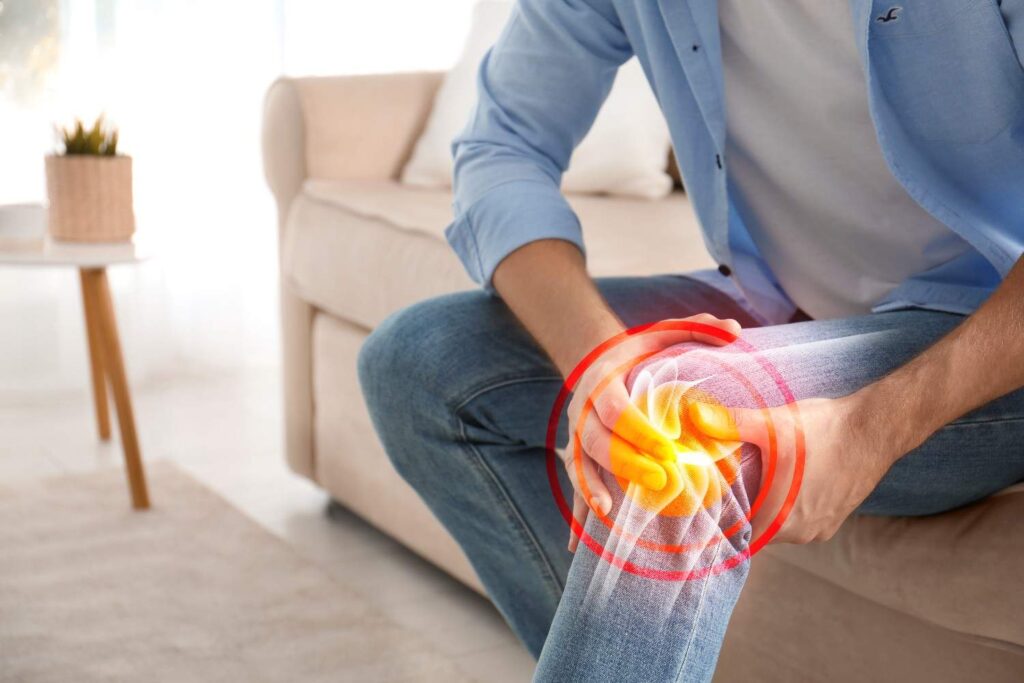Joint pain is one of the most common health complaints worldwide, affecting people of all ages and lifestyles. Whether it’s a dull ache in the knees after a long day or sharp pain in the shoulders during movement, joint discomfort can interfere with daily life and limit mobility. While occasional soreness may result from overuse, persistent or severe pain often signals an underlying issue that deserves attention. Understanding what causes joint pain—and what it might mean for your overall health—is the first step toward finding relief and maintaining joint wellness.
What Are Joints and Why Do They Hurt?
Joints are the connections between bones that allow your body to move smoothly. They’re cushioned by cartilage, lubricated by synovial fluid, and supported by muscles, tendons, and ligaments. When any part of this complex system is injured, inflamed, or worn down, it can lead to pain, stiffness, and swelling. The cause of joint pain can vary widely—from temporary strain to chronic medical conditions.

1. Arthritis: The Most Common Culprit
The term “arthritis” refers to more than 100 conditions that cause joint inflammation. The two most common types are osteoarthritis and rheumatoid arthritis.
- Osteoarthritis (OA) is a degenerative condition that develops when cartilage—the smooth tissue that cushions the ends of bones—wears away over time. This “wear and tear” type of arthritis often affects weight-bearing joints like the knees, hips, and spine. It’s most common in older adults but can also occur after joint injuries. Symptoms include stiffness, aching, and reduced range of motion.
- Rheumatoid arthritis (RA), on the other hand, is an autoimmune disease. The body’s immune system mistakenly attacks the joint lining, leading to inflammation, swelling, and joint deformity over time. Unlike osteoarthritis, RA often affects both sides of the body symmetrically and may cause fatigue and fever.
Recognizing the difference between these types is crucial for proper treatment. While osteoarthritis is managed by lifestyle changes and physical therapy, rheumatoid arthritis often requires medication to control immune system activity.
If you’re experiencing rheumatoid arthritis pain in Glenview, professional help is available. Local specialists and treatment centers can provide personalized care—including medication management, physical therapy, and lifestyle guidance—to help reduce inflammation, ease discomfort, and improve mobility. Early diagnosis and tailored treatment can make a significant difference in preserving joint health and enhancing quality of life.
2. Injuries and Overuse
Joint pain isn’t always chronic—it can also result from injury or overuse. Sprains, strains, tendonitis, and bursitis are common causes, especially in active individuals or athletes.
- Sprains and strains occur when ligaments or muscles around a joint are stretched or torn.
- Tendonitis develops when tendons (which connect muscles to bones) become inflamed from repetitive motion.
- Bursitis affects the fluid-filled sacs (bursae) that cushion the joints, often due to prolonged pressure or overuse.

If you’ve recently increased your activity level, changed your workout routine, or spend long hours in repetitive motion—like typing or gardening—joint pain might simply be your body’s way of saying “slow down.” Rest, ice, and gentle stretching can help, but if the pain persists, a professional evaluation is wise.
3. Inflammation and Infection
Sometimes, joint pain is caused by inflammatory or infectious conditions. Gout, for example, is a form of arthritis triggered by a buildup of uric acid crystals in the joints—most commonly the big toe. The pain is often sudden, intense, and accompanied by redness and swelling.
Infectious (septic) arthritis occurs when bacteria or viruses invade a joint, leading to severe pain, swelling, and fever. This type of joint pain requires immediate medical attention, as untreated infections can cause permanent joint damage.
4. Autoimmune and Systemic Diseases
Joint pain can also be a symptom of broader health issues. Conditions such as lupus, psoriatic arthritis, or Lyme disease often involve joint inflammation as part of their overall effect on the body. In these cases, the pain may shift from one joint to another and is often accompanied by fatigue, rash, or other systemic symptoms.
When joint pain comes with unexplained weight loss, prolonged fatigue, or other unusual symptoms, it’s important to see a doctor for a full evaluation. Early detection of autoimmune or infectious causes can prevent long-term complications.
5. Lifestyle and Environmental Factors
Not all joint pain stems from disease. Everyday habits and environmental factors can also play a role. Being overweight places extra stress on weight-bearing joints, accelerating cartilage wear. Poor posture, a sedentary lifestyle, or improper footwear can all contribute to misalignment and discomfort.
Diet may influence joint health as well. High sugar intake, processed foods, and excessive alcohol can increase inflammation, while anti-inflammatory foods—like fatty fish, nuts, and leafy greens—support joint function.
When to Seek Medical Help

While minor joint aches can often be managed at home with rest, stretching, and over-the-counter pain relievers, you should consult a healthcare professional if:
- The pain lasts more than a few days or worsens over time
- You experience swelling, redness, or warmth around the joint
- The joint becomes visibly deformed
- You have a fever or feel unwell along with the pain
Early diagnosis and treatment can make a major difference in managing symptoms and preventing long-term damage.
Final Thoughts
Joint pain is not just a sign of aging—it’s your body’s way of signaling that something needs attention. Whether caused by arthritis, injury, or lifestyle factors, understanding the source of your discomfort is key to finding relief. By staying active, maintaining a healthy weight, and seeking medical advice when necessary, you can protect your joints and keep moving with comfort and confidence.









